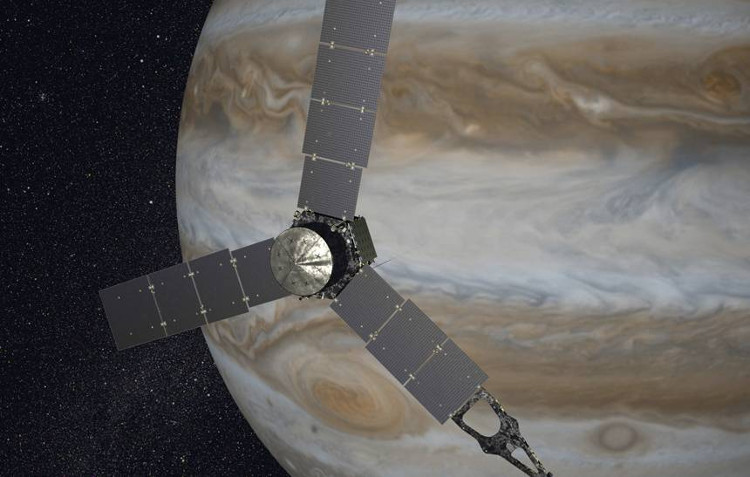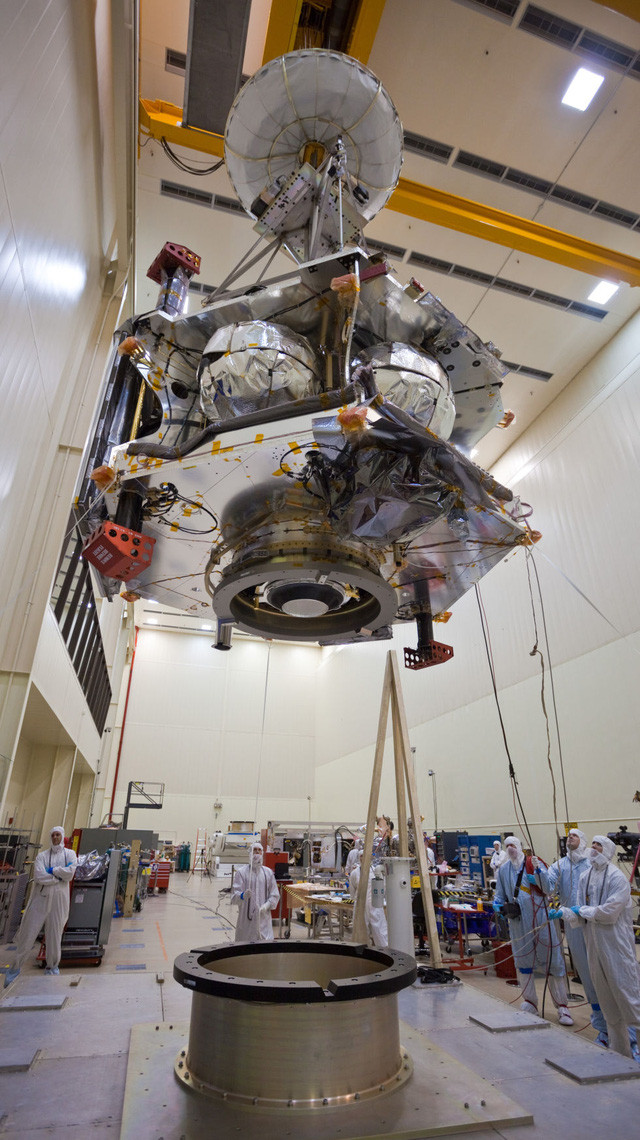The amazing thing that NASA's Juno spacecraft has just made
Today, Google changes its doodle to celebrate an extremely important event of the aerospace industry.
That is, NASA's Juno spacecraft has officially approached Jupiter, after experiencing a long journey with many difficulties.

Google's new doodle celebrates this special event.
Flying in space at 265,000 km / h, the Juno spacecraft is heading to one of Jupiter's giant whirlpools and it will not have a second chance. If the Leros 1b engine, which was prepared for this moment, burned too long, Juno would be swallowed up by Jupiter's giant vortex.

Juno spacecraft spreads solar panels, preparing to approach Jupiter's orbit.
But if this engine launches in a short time, Juno will be thrown back into space and disappear forever. Only a small mistake can cause this important mission to fail.
And it was great that on the night of July 4, the Leros 1b engine had launched correctly for a total of 2,102 seconds. Bringing the Juno spacecraft to the perfect orbit of Jupiter, this is the first time a probe can fly into Jupiter's orbit.

Juno ship in Jet Propulsion Laboratory, California.
Back on Earth, engineers at the Jet Propulsion Laboratory in California were delighted with this success. Over the past 5 years, a team of 300 scientists has led Juno to reach Jupiter.
900 other engineers involved in designing and manufacturing Juno ships. In the moment that Juno was able to reach Jupiter's orbit, the project's chief supervisor was Mr. Scott Bolton excitedly and told other engineers:
"You have just done the hardest thing NASA ever did."

The Juno is included in a giant vacuum tube for testing.
It's true. It took NASA nearly a decade to build a spacecraft that could "survive" against the very strong heat radiation of Jupiter's atmosphere. The ship must then be transported into space, helping it fly over 2.7 billion km in 5 years. In the end, doing a lower level curtain just a little wrong is all the previous effort was thrown away.
In fact, the Juno ship will also not be able to return, meaning NASA's $ 1.1 billion will be burned by Jupiter radiation. Even when equipped with a 1cm thick titanium cover, the Juno ship will not be able to withstand Jupiter radiation for more than 20 months.

Juno's solar panel is about the size of a basketball court.
Therefore, the Juno ship's next mission must be rushed before the deadline arrives. With sensors and cameras, this spacecraft will collect Jupiter's atmosphere data and look for signs of oxygen.
However, due to strong radiation, Juno ships will not be able to send data to Earth right now. But scientists will have to wait until the end of August to receive these important data. After that, Juno will advance to Jupiter's lower orbit.
Jupiter is the giant in our solar system, weighing 2.5 times the total weight of all other planets combined. Scientists do not expect to find signs of life here, but Jupiter still has many mysteries to be discovered.

Reaching Jupiter (Jupiter) is an important mission in exploring our solar system.
It is the existence of hydrogen at the enormous pressure of this planet , or the existence of extremely strong magnetic fields , giant swirling clouds of gas are also interesting mysteries. And the special thing is that the moon system.
In particular, the moon Europa is most interested. Because the smallest satellite of Jupiter has a lot of water. Most of the water is in the form of ice and it's giant ice cubes like an ocean.
It is possible that after reaching Jupiter, NASA will continue its mission to explore the moon Europa to search more closely for signs of life. Juno is a special mission of NASA, proving that we can reach further planets in the universe.
- Juno spacecraft straightens Jupiter
- Juno spacecraft completes halfway to Jupiter
- NASA's Juno spacecraft is about to approach Jupiter on July 4
- The Juno spacecraft has responded to Moc Tinh
- Juno spacecraft successfully approached Jupiter for the third time
- NASA escapes freezing in Jupiter's darkness
- The Juno probe sends the first image of Jupiter to Earth
- Photographs of Jupiter's surface look exactly like a water-picture
- A series of wonderful images of Jupiter are sent from the Juno-NASA ship
- Beautiful sea of Jupiter clouds smells hard to smell
- Stunning Jupiter through the latest image of the Juno ship
- Discover mysterious blue UFO 160km long near Jupiter
 Van Allen's belt and evidence that the Apollo 11 mission to the Moon was myth
Van Allen's belt and evidence that the Apollo 11 mission to the Moon was myth The levels of civilization in the universe (Kardashev scale)
The levels of civilization in the universe (Kardashev scale) Today Mars, the sun and the Earth are aligned
Today Mars, the sun and the Earth are aligned The Amazon owner announced a secret plan to build a space base for thousands of people
The Amazon owner announced a secret plan to build a space base for thousands of people